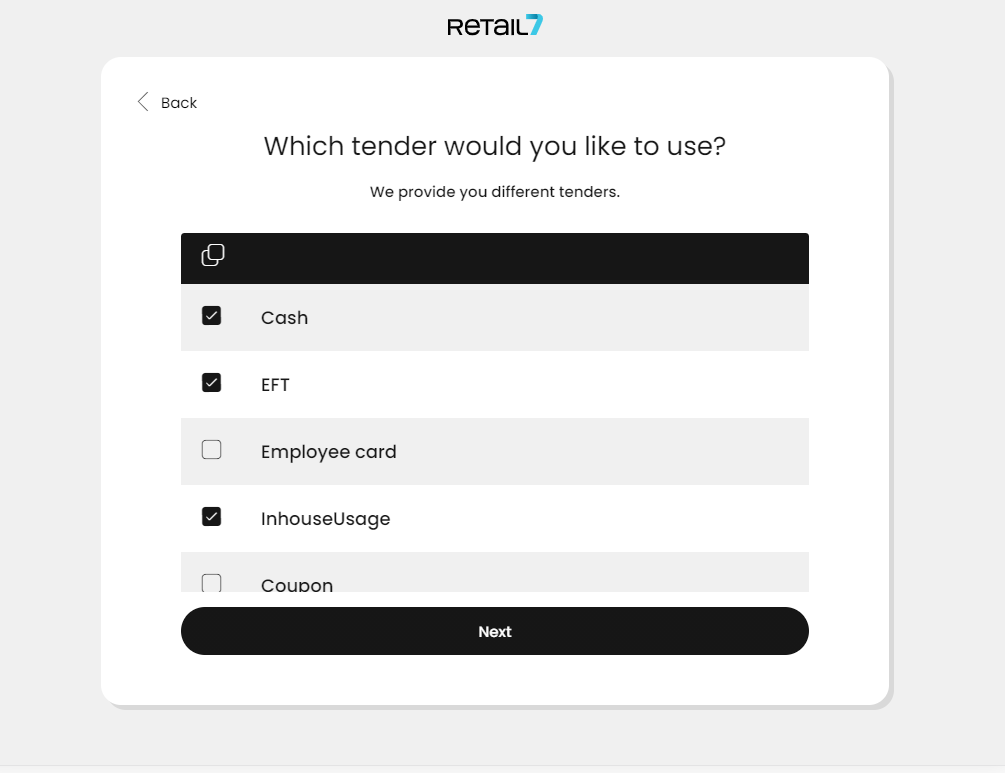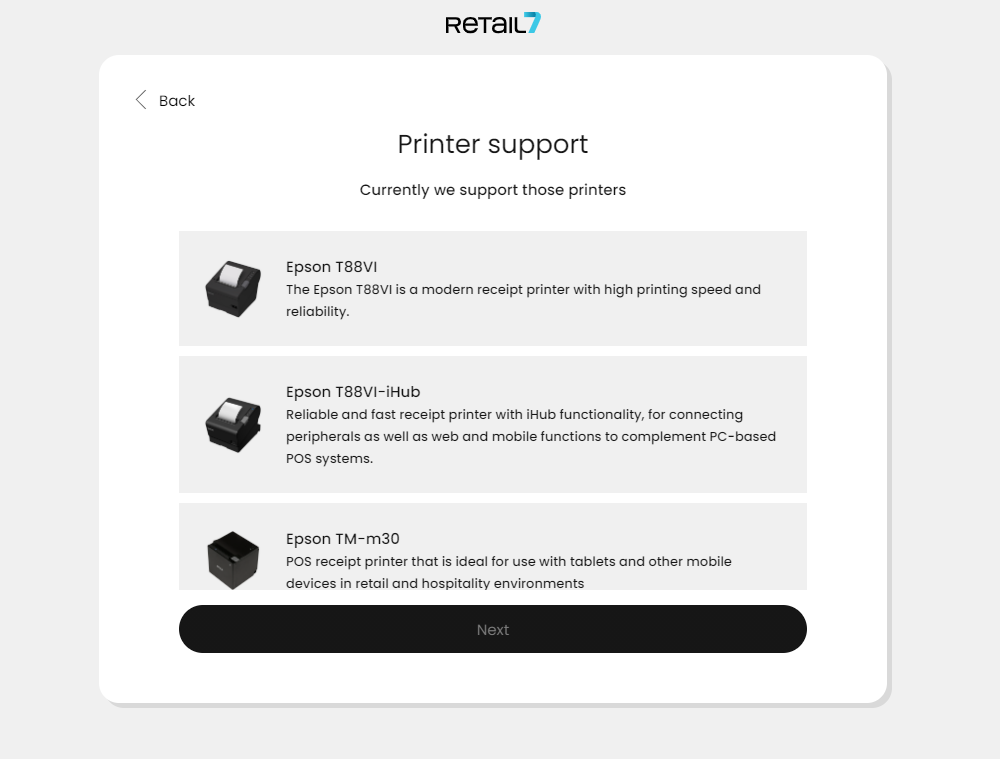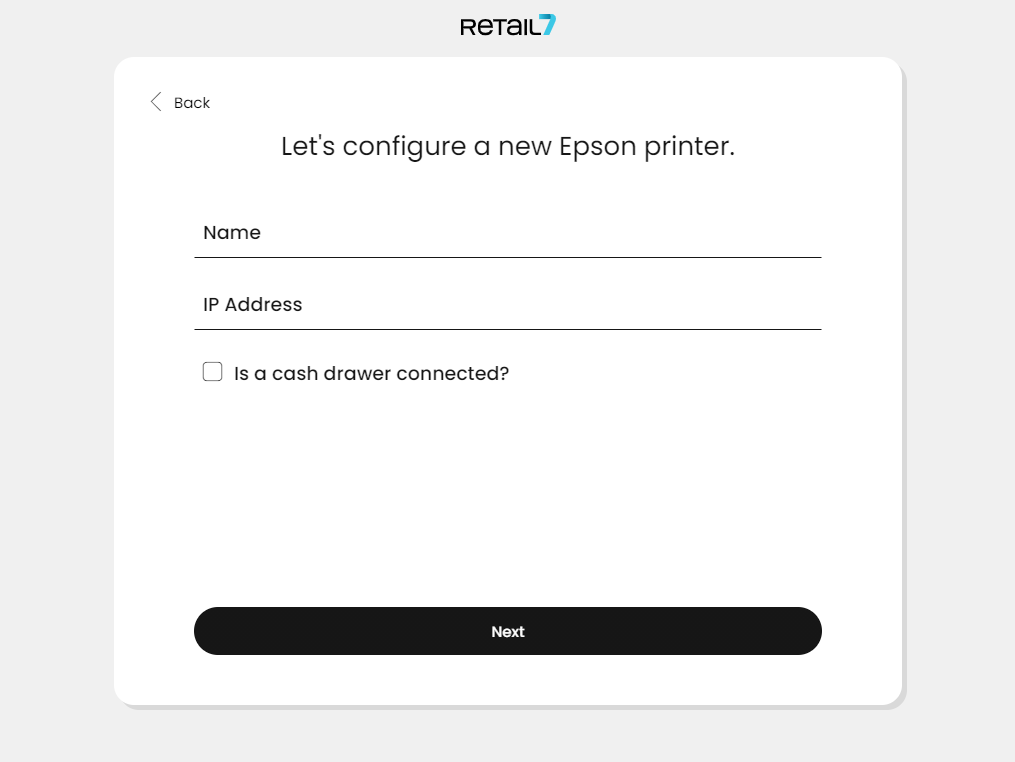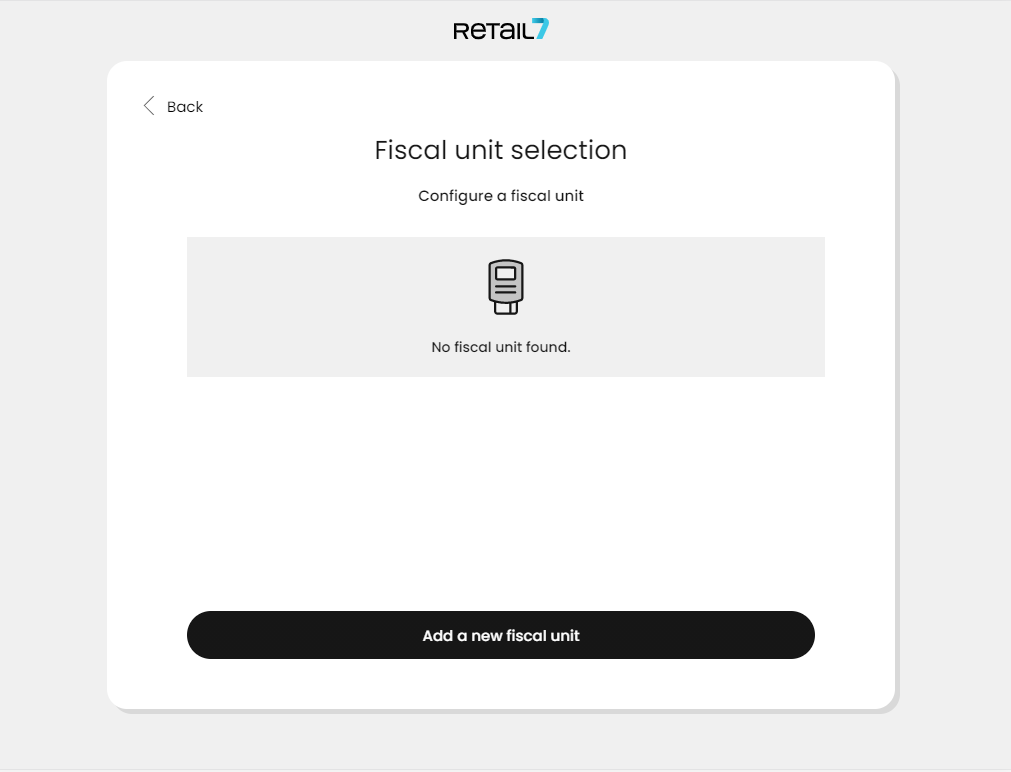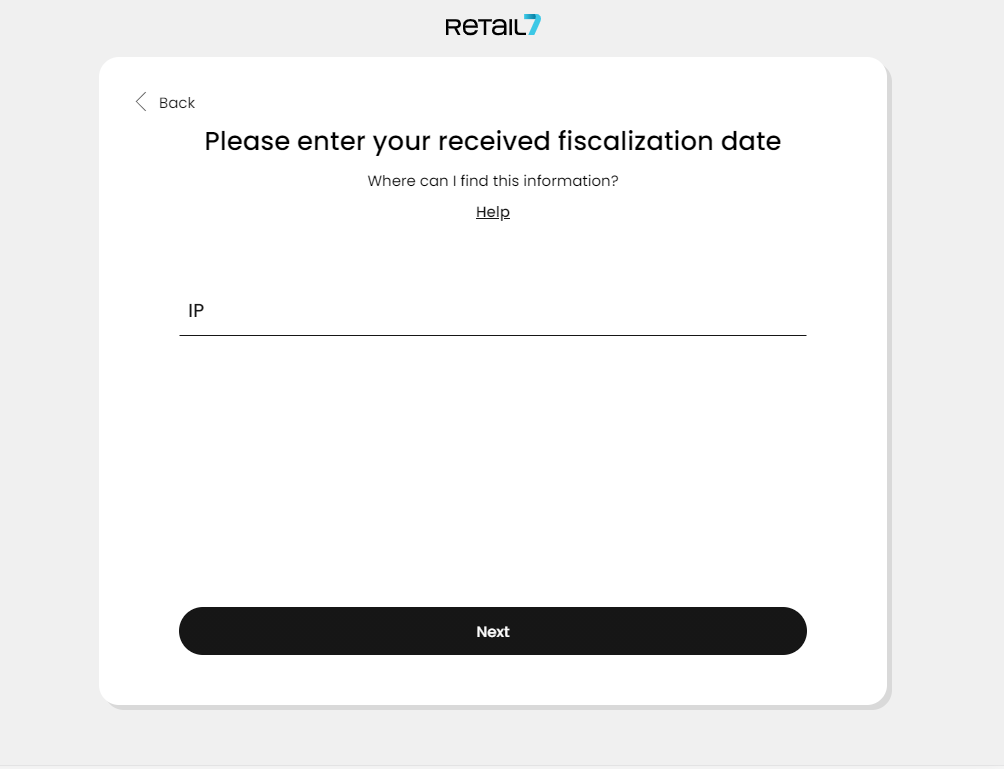4. End device types
After purchasing retail7 POS software, you receive a license. This is used to install the app on an end device of your choice. Should another device being set up as cash register, or a customer display is to be used, another license can easily be purchased for this via the Management Console. In this way, the cash register can be connected to the customer display. On the customer display additional information is displayed, which are visible for the customer, but the payment process is not shown.
4.1 Cash register
First of all, registration on our website at https://retail7.io/ is necessary. To do this, enter the website address in a browser of your choice, and when the page is fully loaded, our home page will be displayed. Now click on the Register button in the upper right corner. We will then provide instructions on how to set up the Management Console of the retail7 POS software. The Management Console is an interface that can be used to configure all the settings relating to the cash register. It is important that the payment data has been stored, otherwise the console cannot be used. That´s why, first of all, a window appears on the interface, reminding to complete the data.
After setting up the Management Console, it is time to download the app via the store of the end device (Google Play for Android, App Store for iOs). Once the download is complete, the retail7 POS app must be launched. In the following, we explain which steps must be followed for the configuration in the app on the end device. Afterwards, you can start with cashing up!
ATTENTION: After the successful registration you will receive a license for the retail7 POS software, i.e. the cash register can be used on an end device. If the cash register is to be operated on another device, this is no problem! To do this, purchase another license in the Management Console. To do this, log into the console and select Add another license in the center of the start screen´s dashboard. Then select a model and confirm the purchase.
Start the retail7 app on the end device.
Click on Log In.
Enter the login data.
The login data corresponds to the Management Console data. These data are set during the registration process.
4. Select the business type and click Next.
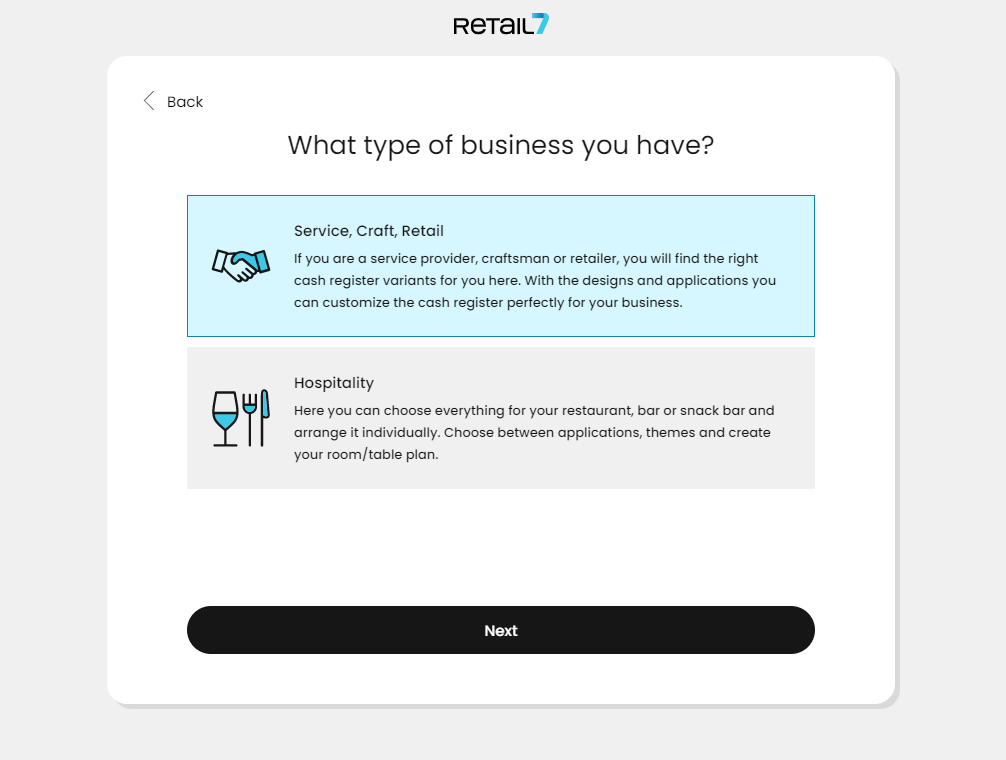
The Service, Craft, Retail type consists of the range of functions of a classic cash register, such as used in a supermarket or a shop.
The Hospitality type is for the catering trade, here the cash register contains service areas and tables. Thus individual orders for each table can be taken up and/or cashed separately. In the bakery area there is an ideal overview of the items and they can be selected quickly.
5. Define the Type of the end device and select Next.
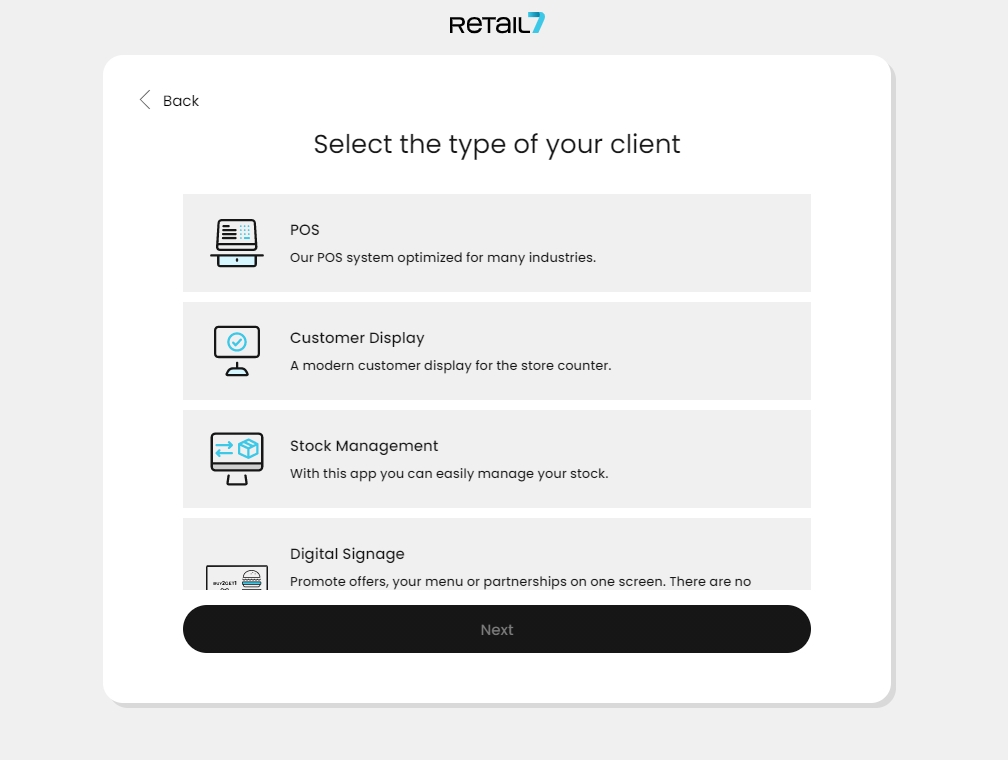
6. Select a Template and click Next.
The Template will define, what functions will your cash register have. E.g. you can set up a normal cash register or a group-POS, a Service POS, or a Self Checkout POS.
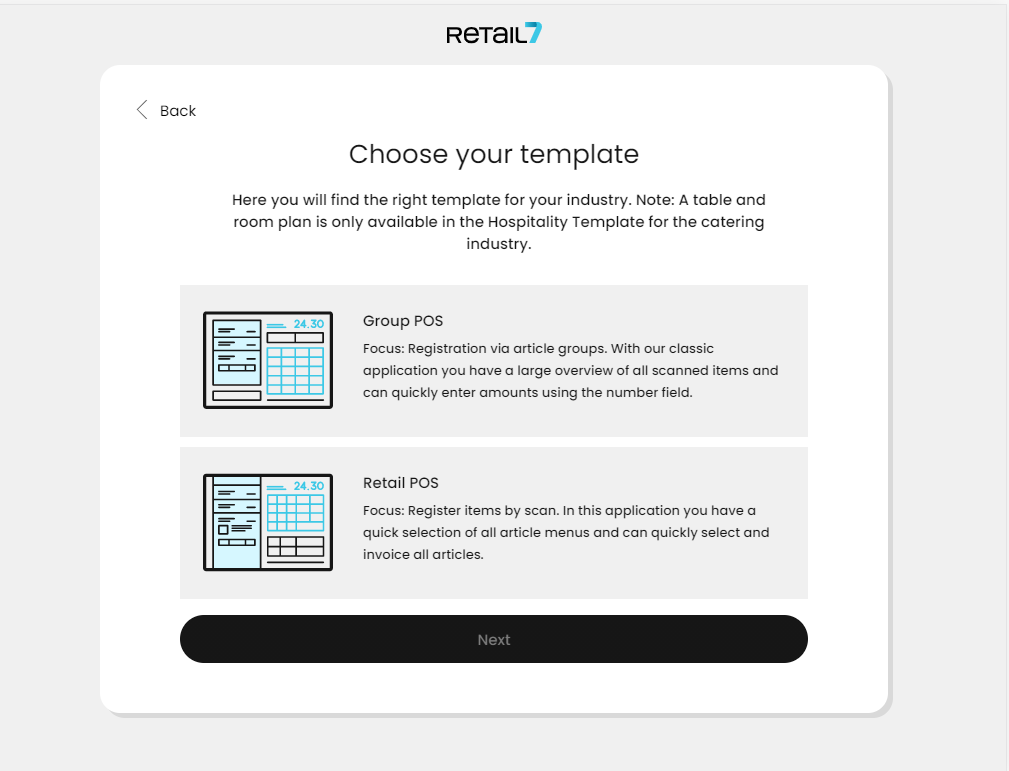
The Theme define the appearance of your app. You can choose from different designs and find the one which fits the best for your business profile.
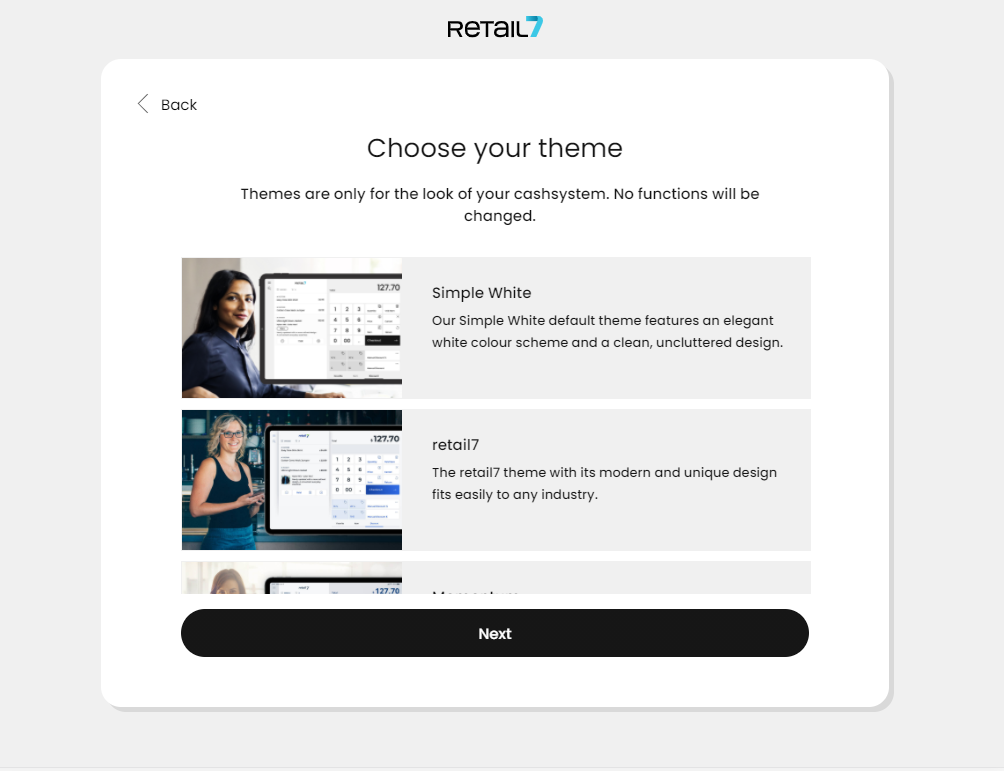
8. Set up the data of your store. You can do this also in the Management Console earlier, in this case you will see the data of your store here. If you added more than one store, you can choose, which one this end device will be used in.
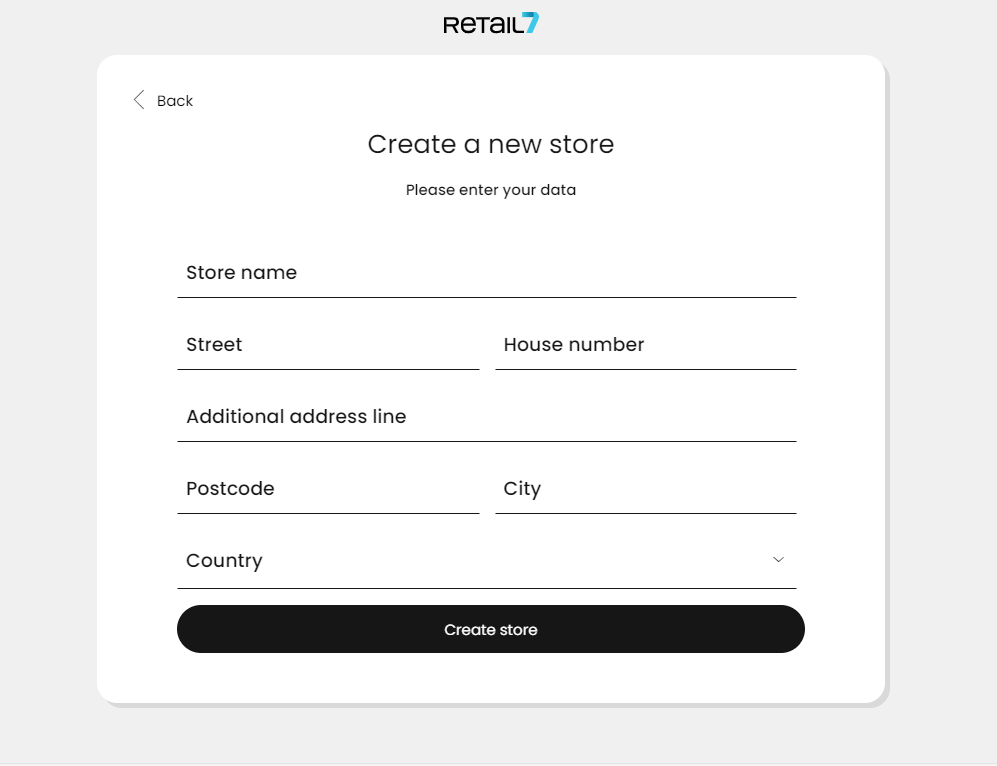
According to this principle, almost every setting can be configured via the retail7 Management Console. More information about the structure of the structure diagram is available under the section My organization.
If you have already created your store(s) in Management Console earlier, you only have to choose here, which one this end device should be assigned to.
9. Click on Create store.
10. Now you can define which tender would you like to use?
In retail7 we provide a wide selection of different tender types from cash through EFT payment to coupons or gift cards. On this screen, by clicking in or out the checkboxes, you can choose, which ones you would like to accept. After you have checked in all you need, click on Next.
11. Select the Add a new printer option here.
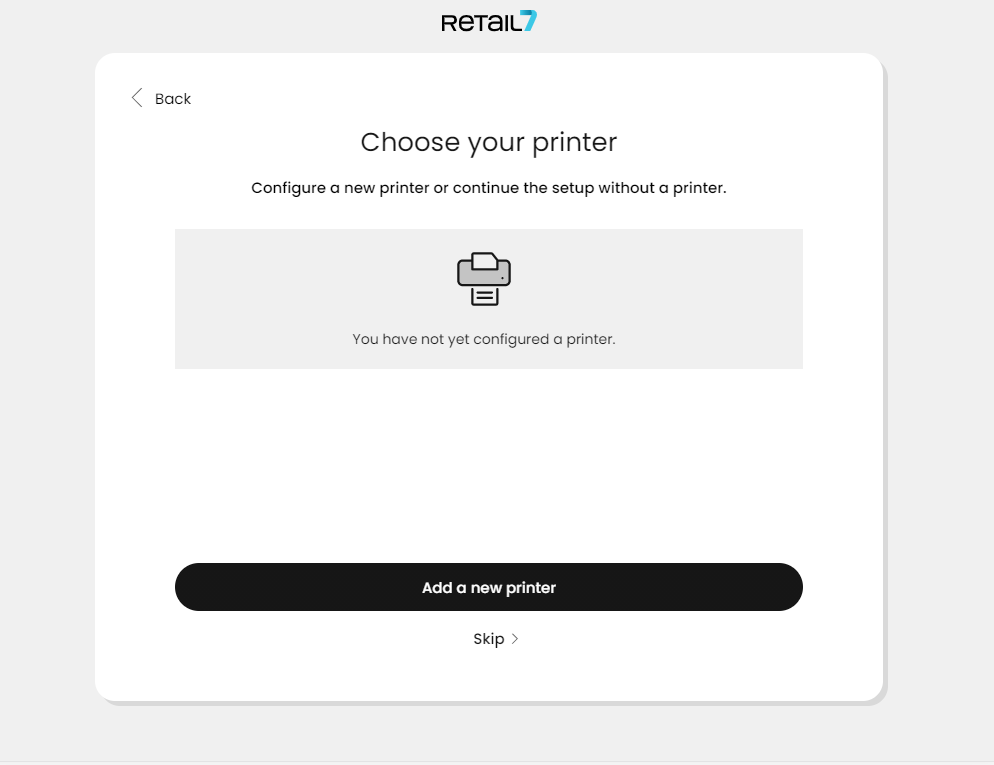
12. Select a printer from the list.
All printers compatible with retail7 are listed here.
13. Confirm the automatic printer search.
For this, the printer must first be connected to the network, otherwise the search would fail. See the Hardware section for more information on the hardware available for the retail7 POS system. However, should the network search fail, the name and the IP address of the printer can be typed manually. Also you can choose here, by checking in the checkbox, whether a cash drawer is connected to the system.
After adding these data, click Next.
14. Click on the Configure a Fiscal Security Device option.
If a fiscal security device has already been configured, it can be selected from the list displayed. The device records all transaction processes of the cash register. This data is then entered at the responsible tax office. For this purpose, further information should be obtained from your tax advisor.
15. Enter the fiscalization data.
Attention: The PUK is then printed out. This printout must be kept in a safe place, otherwise the technical security device can no longer be accessed.
In addition, more information is available in the Management Console under the Menu → My organization → Organizational units → Fiscal.
15. Go to Next.
16. Select configure a new terminal option.
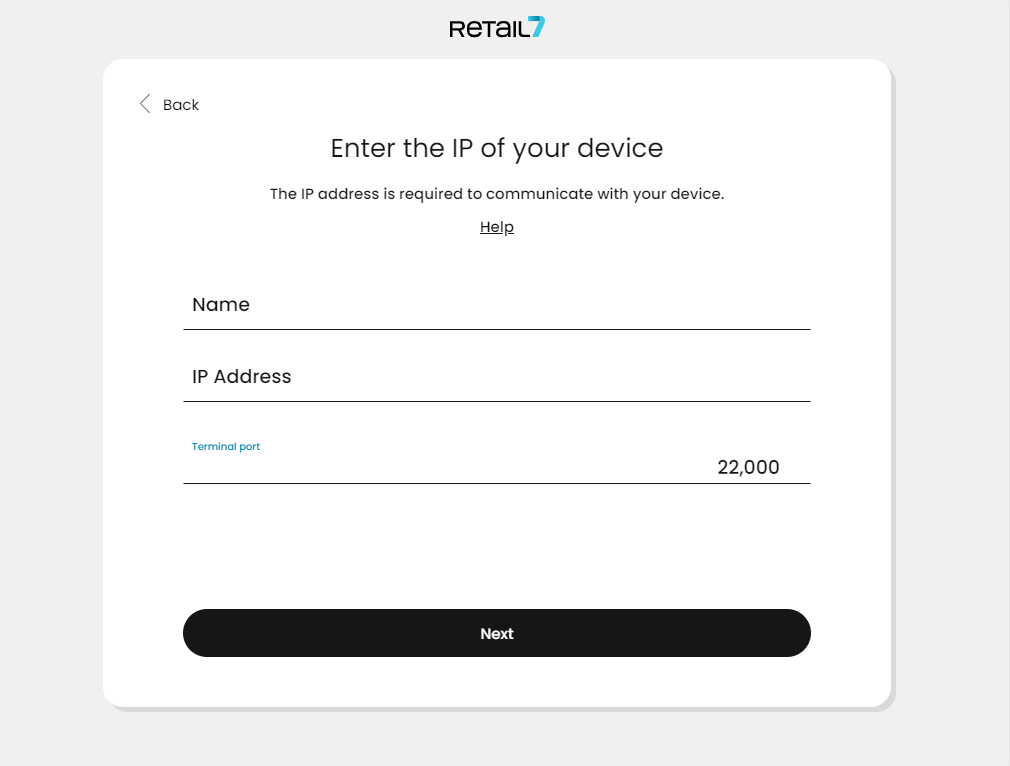
17. Specify whether there is a ZVT terminal or an External terminal.
A connection between the POS software and the payment terminal is established via the ZVT interface. Thus, it is possible for customers to finish the transaction at the checkout by card payment. For ZVT, enter the name and IP address of the terminal and select Next.
External terminals can also be connected to the POS device (e.g. via USB cable or Bluetooth). To do this, enter the name of the terminal and click Next.
18. Define a device name and complete the data entry.
Wait until the cash register is fully set up: this can take a few minutes, because for this the system must go through all the steps below. Then you can log into the cash register and start selling!
4.2 Customer display
Before the customer display can be set up, the retail7 app must be installed on the end device. To do this, download the app via the respective app store (Google Play for Android, App Store for iOs). Then log in with the login data that was created during registration.
ATTENTION: a customer display can be set up only after at least one cash register has already been set up. For setting up a customer display, another end device and another license is required.
1. Log in with your credentials set up at registration.
These credentials are defined during registration, and are valid for the Management Console as well as for the retail7 app.
2. Select a business type.

3. Select the type for the end device.

4. Specify a Template.
The template of the customer display differs from the template of the cash register. For more information about the cash register template, see Templates.
It is possible to create a customer display (as in a general store), or a customer display with tipping option (for Hospitality). If a customer display with tip is required, a touch-enabled end device must be available, otherwise the customer will not be able to navigate on the display.
5. Choose the right Theme.
The Theme affects the customer display only visually, but has no functional influence on the display. More information about themes is available in the Themes section
6. Log in to the cash register.
To do this, use the credentials defined during the registration process.
7. Open the user menu and select Settings → Connect customer display.
8. Specify the connection code displayed on the cash register.
Make sure that the cash register and the customer display are on the same network.
9. Click Next on the customer display.
Wait until the system has completed all steps. Then you can see the interface of the customer display.
